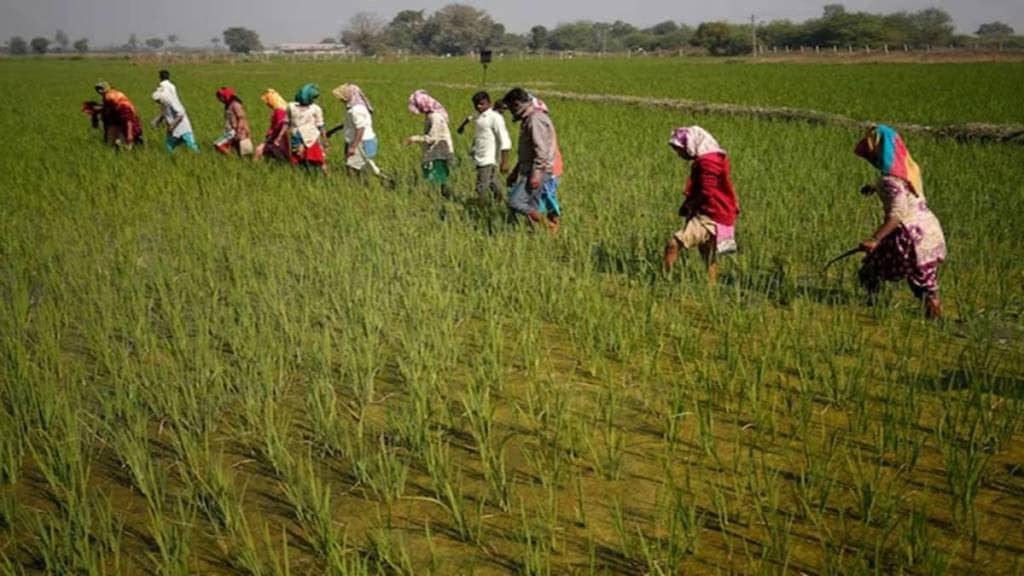By Smita Sirohi
As the world observes World Food Day 2025 under the theme, “Hand in Hand for Better Food and a Better Future”, it is a moment to reflect on the purpose of agri-trade not as a race for market share, but as a platform for shared prosperity. For a country like India, the challenge and opportunity lie in making trade not only safe and competitive, but also inclusive and transformative.
But this future is unfolding against an uncertain backdrop. While the OECD-FAO Agricultural Outlook notes that global real prices of agricultural commodities may soften in the coming years due to productivity gains, the projections remain inherently uncertain—due to a complex interplay of weather, disease outbreaks, geopolitical tensions, and shifting policies that can trigger volatility in production and trade. In such an environment, merely producing more is no longer enough.
Food safety must anchor India’s agriculture trade
If India truly seeks to lead in agri-trade, then food safety, standards, and certification systems must become the core pillars of our domestic agricultural architecture—from seed to harvest and from soil health to shelf life. These cannot remain export-linked afterthoughts or reactive responses to trade rejection.
Traditionally, India’s agricultural policy has rightly focused on increasing food production, be it the Green Revolution (cereals), the White Revolution (milk), or surges in pulses and horticulture. But quantity alone does not equal sovereignty. The next frontier must be about ensuring food is not just adequate but also safe and nutritious for our citizens and global partners.
This calls for systemic investment in science-policy interfaces, robust surveillance systems, and coordinated research on food safety risks. At present, this research is often fragmented across institutions, not timely or accessible, and rarely designed with regulatory use in mind. Ministries, regulators, commodity boards, and trade negotiators frequently operate in silos, weakening India’s international negotiating capacity and delaying domestic response. To fix this, India needs a coordination unit for the application of permanent sanitary and phytosanitary measures and on technical barriers to trade. It will bring together scientists, trade diplomats, food regulators, industry representatives, and, crucially, interface professionals who can bridge the worlds of scientific evidence and regulatory language. Sovereignty in today’s trade environment lies not in resistance, but in a capability to foresee emerging barriers and shape compliance from the ground up.
The global trade landscape is shifting—and not always fairly. Agri-trade is no longer about tariffs and tonnage alone. It is about norms and narratives. For instance, the maximum residue limit of pesticides vary widely across geographies. Animal welfare rules, antimicrobial resistance limits, and even carbon-linked trade rules vary dramatically across countries. The result? Producers in the Global South find themselves navigating contradictory rulebooks with high compliance costs and no voice in rule-making.
India must take the lead in setting agri-trade standards
India, as one of the largest agri-exporters and a key voice in South-South cooperation, must shift from being a standard-taker to a standard-shaper. It means using our scientific capability and market leverage to co-develop risk-based, appropriate standards—including regionally-adjusted pesticide residue norms, science-informed genetic modification regulations, and proportionate approaches to climate-linked food labelling. But it also means looking beyond North-South dynamics and strengthening South-South technical cooperation.
A concrete step could be setting up a Global South food risk assessment hub with India in a leadership role, or an agri-standards dialogue that enables peer learning, evidence-sharing, and common positioning among developing countries.
None of this will matter if agri-trade benefits bypass India’s smallholders, women, and youth. Trade-led growth is not automatically inclusive; it needs deliberate institutional design.
Indian embassies are flooded with trade queries from first-time or aspiring exporters, mostly small in production scale. Many are enthusiastic but lack clear information, leads, or hand-holding. Embassies can offer basic importer lists, but the absence of an institutional ecosystem to support these entrepreneurs turns opportunity into a missed potential. The gap between trade curiosity and trade capability remains wide. Trade promotion bodies and various commodity boards are doing commendable work, but the outreach to tier-II and -III cities, rural enterprises, and self-help groups/farmers producer organisations needs to expand.
To make the trade ecosystem truly inclusive, India must build digital public infrastructure for export readiness—with multilingual support, region-specific information, step-by-step compliance guidance, and explainer videos accessible to all. Market intelligence should be converted into actionable insights for small clusters, and dedicated smallholder funds are also needed to help farmer groups meet minimum order sizes, pay for certification, and forge links with global buyers. We can learn from producer-importer networks in Latin America where banana grower associations directly engage with European Union regulators and trade bodies to negotiate compliance pathways.
The true measure of India’s agri-trade leadership will not be just in export numbers, but in growth that is resilient, inclusive, and equitable. As the world looks for better food and a better future, India has a unique opportunity to align food safety with sovereignty, fair standard-setting, and trade ambition with social inclusion. This must be the foundation of India’s leadership—not just for the Global South, but for a more just global agri-food order.
Disclaimer: Views expressed are personal and do not reflect the official position or policy of Financial Express Online. Reproducing this content without permission is prohibited.

